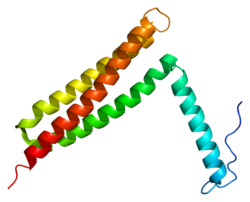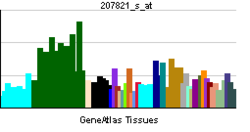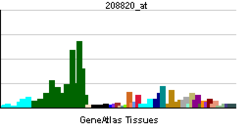Lilly Announces Phase III Necitumumab Study Meets Primary Endpoint of Overall Survival
Study found improved overall survival in patients with stage IV squamous NSCLC
INDIANAPOLIS,
Aug. 13, 2013 /PRNewswire/ -- Eli Lilly and Company
(NYSE: LLY) today announced that SQUIRE, a recently completed Phase III
study, met its primary endpoint, finding that patients with stage
IV metastatic squamous non-small cell lung cancer (NSCLC) experienced
increased overall survival (OS) when administered necitumumab
(IMC-11F8) in combination with gemcitabine and cisplatin as a first-line
treatment, as compared to chemotherapy alone.
The most common adverse events occurring more frequently in patients
on the necitumumab arm were rash and hypomagnesemia. Serious, but less
frequent, adverse events occurring more often on the necitumumab arm
included thromboembolism.
"We are pleased with these data which represent a potential advance
in treatment for patients with squamous non-small cell lung cancer,
which is a difficult cancer to treat," said
Richard Gaynor,
M.D., vice president, product development and medical affairs for Lilly
Oncology. "If approved, necitumumab could be the first biologic therapy
indicated to treat patients with squamous lung cancer."
Lung cancer is the leading cause of cancer death in the US and most other countries.
[1] Non-small
cell lung cancer (NSCLC) is much more common than other types of lung
cancer, and accounts for 85 percent of all lung cancer cases.
[2] Patients with squamous cell carcinoma represent about 30% of all patients affected by NSCLC.
1
Lilly plans to present results from this study at a scientific
meeting in 2014, and currently anticipates submitting to regulatory
authorities before the end of 2014.
About the Study
SQUIRE enrolled 1093 patients (age greater than or equal to 18 years,
ECOG PS 0-2) with histologically- or cytologically-confirmed, stage IV
squamous NSCLC, who had received no prior therapy for metastatic
disease. Patients were randomized to receive first-line necitumumab plus
chemotherapy consisting of gemcitabine and cisplatin in study Arm A, or
gemcitabine-cisplatin chemotherapy alone in study Arm B. Patients
underwent radiographic assessment of disease status (computed
tomography or magnetic resonance imaging) every six weeks (+/- 3 days),
until radiographic documentation of progressive disease (PD).
Chemotherapy continued for a maximum of six cycles in each arm (or until
there was radiographic documentation of PD, toxicity requiring
cessation, or withdrawal of consent); patients in Arm A continued to
receive necitumumab (IMC-11F8) until there was radiographic
documentation of
PD, toxicity requiring cessation, or withdrawal of consent.
About Necitumumab
Necitumumab is a fully human IgG1 monoclonal antibody that is
designed to block the ligand binding site of the human epidermal growth
factor receptor (EGFR). Activation of EGFR has been correlated with
malignant progression, induction of angiogenesis and inhibition of
apoptosis or cell death.
About Lilly Oncology
For more than four decades, Lilly Oncology, a division of Eli Lilly and Company,
has been dedicated to delivering innovative solutions that improve the
care of people living with cancer. Because no two cancer patients are
alike, Lilly Oncology is committed to developing novel treatment
approaches. To learn more about Lilly's commitment to cancer, please
visit
www.LillyOncology.com
About Eli Lilly and Company
Lilly, a leading innovation-driven corporation is developing a
growing portfolio of pharmaceutical products by applying the latest
research from its own worldwide laboratories and from collaborations
with eminent scientific organizations. Headquartered in
Indianapolis, Ind.,
Lilly provides answers — through medicines and information — for some
of the world's most urgent medical needs. Additional information about
Lilly is available at
www.lilly.com.
P-LLY
This press release contains forward-looking statements about the
potential of necitumumab as a treatment for patients with squamous non
small cell lung cancer and reflects Lilly's current beliefs. However, as
with any pharmaceutical product, there are substantial risks and
uncertainties in the process of development and commercialization. There
is no guarantee that future studies will be positive or that
necitumumab will receive regulatory approvals or prove to be
commercially successful. For further discussion of these and other risks
and uncertainties, see Lilly's filings with the United States Securities and Exchange Commission. Lilly undertakes no duty to update forward-looking statements.
Important Safety Information for GEMZAR® (gemcitabine for injection)
Myelosuppression is usually the dose-limiting toxicity with GEMZAR therapy.
ContraindicationGEMZAR is contraindicated in patients with a known hypersensitivity to gemcitabine.
Warnings and PrecautionsPatients receiving
therapy with GEMZAR should be monitored closely by a physician
experienced in the use of cancer chemotherapeutic agents.
Infusions of GEMZAR longer than 60 minutes or dosing more
frequently than weekly resulted in an increased incidence of clinically
significant hypotension, severe flu-like symptoms, myelosuppression, and
asthenia. The half-life of GEMZAR is influenced by the length of the
infusion.
Myelosuppression manifested by neutropenia, thrombocytopenia, and
anemia occurs with GEMZAR as a single agent, and the risks are increased
when GEMZAR is combined with other cytotoxic drugs. Patients should be
monitored for myelosuppression during therapy including a complete blood
count with differential prior to each dose.
Pulmonary toxicity, sometimes fatal, including interstitial
pneumonitis, pulmonary fibrosis, pulmonary edema, and adult respiratory
distress syndrome (ARDS), has been reported. The onset of pulmonary
symptoms may occur up to 2 weeks after the last dose of GEMZAR.
Discontinue GEMZAR in patients who develop unexplained dyspnea, with or
without bronchospasm, or have any evidence of pulmonary toxicity. In
some cases, these pulmonary events can lead to fatal respiratory failure
despite discontinuation of therapy.
Hemolytic Uremic Syndrome (HUS), including fatalities from renal
failure or the requirement of dialysis, can occur in patients treated
with GEMZAR. Always monitor renal function prior to initiation of GEMZAR
therapy and periodically during treatment. Use GEMZAR with caution in
patients with renal impairment. Permanently discontinue GEMZAR in
patients with HUS or severe renal impairment. Renal failure may not be
reversible even with discontinuation of therapy.
Drug-induced liver injury, including liver failure and death, has
been reported in patients receiving GEMZAR alone or in combination with
other potentially hepatotoxic drugs. Administration of GEMZAR
in patients with concurrent liver metastases or a preexisting medical
history of hepatitis, alcoholism, or liver cirrhosis can lead to
exacerbation of hepatic insufficiency. Assess hepatic function prior to
initiation of GEMZAR and periodically during treatment. Discontinue
GEMZAR in patients that develop severe liver injury.
GEMZAR can cause fetal harm when administered to a pregnant woman. Advise women of potential risks to the fetus.
GEMZAR is not indicated for use in combination with radiation
therapy. When GEMZAR was administered within 7 days of receiving
radiation therapy or concurrent with radiation therapy, toxicity of
radiation therapy was increased. In a clinical trial, life-threatening
mucositis, especially esophagitis and pneumonitis, occurred. Excessive
toxicity has not been observed when GEMZAR is administered more than 7
days before or after radiation (nonconcurrent). Radiation recall has
been reported in patients who receive GEMZAR after prior radiation.
Capillary Leak Syndrome (CLS) with severe consequences has been
reported in patients receiving GEMZAR as a single agent or in
combination with other chemotherapeutic agents. Discontinue GEMZAR if
CLS develops during therapy.
Use in Specific Populations
GEMZAR is Pregnancy Category D. GEMZAR can cause fetal harm when
administered to a pregnant woman. Based on its mechanism of action,
GEMZAR is expected to result in adverse reproductive effects. It is not
known whether GEMZAR is excreted in human milk. A decision should be
made whether to discontinue nursing or to discontinue the drug, taking
into account the importance of the drug to the mother.
The safety and efficacy of GEMZAR in pediatric patients have not been established.
No clinical studies have been conducted with gemcitabine in patients with decreased renal or hepatic function.
GEMZAR clearance is affected by age as well as gender.
Dose Modifications and Administration Guidelines
GEMZAR is for intravenous use only. Immediately and permanently
discontinue GEMZAR for any of the following: unexplained dyspnea or
other evidence of severe pulmonary toxicity, severe hepatic toxicity,
Hemolytic Uremic Syndrome, or Capillary Leak Syndrome. Consider
immediate discontinuation or dose modifications for severe
nonhematologic toxicity according to the Dosage and Administration
guidelines in the full Prescribing Information.
Serum creatinine, potassium, calcium, and magnesium should be
monitored during combination therapy with cisplatin. See the
manufacturers' prescribing information for more information on any drug
indicated in combination with GEMZAR.
Abbreviated Adverse Reactions (%-incidence) — Patients receiving single-agent GEMZAR across 5 trials
The most severe adverse reactions (grades 3/4) in all patients
receiving single-agent GEMZAR across five clinical trials were anemia
(8), neutropenia (25), thrombocytopenia (5), hepatic transaminitis
(increased ALT, 10; increased AST, 8), increased alkaline phosphatase
(9), hyperbilirubinemia (3), nausea and vomiting (14), fever (2), and
dyspnea (3).
The most common adverse reactions (all grades) in the same patient
population were anemia (68), neutropenia (63), thrombocytopenia (24),
increased ALT (68), increased AST (67), increased alkaline phosphatase
(55), hyperbilirubinemia (13), proteinuria (45), hematuria (35),
increased BUN (16), increased creatinine (8), nausea and vomiting (69),
fever (41), rash (30), dyspnea (23), diarrhea (19), hemorrhage (17),
infection (16), alopecia (15), stomatitis (11), somnolence (11), and
paresthesias (10).
Abbreviated Adverse Reactions (%-incidence) − 1st-line advanced NSCLC
The most severe adverse reactions (grades 3/4, with incidence of
5% or greater) with GEMZAR plus cisplatin for the first-line treatment
of patients with NSCLC in comparative trials of a 28-day regimen (GEMZAR
plus cisplatin versus cisplatin alone) and a 21-day regimen (GEMZAR
plus cisplatin versus etoposide plus cisplatin), respectively, were
neutropenia (57 vs 4, 64 vs 76); thrombocytopenia (50 vs 4, 55 vs 13);
lymphopenia 28d (43 vs 17); anemia (25 vs 7, 22 vs 15); nausea and
vomiting 21d (39 vs 26); nausea 28d (27 vs 21); vomiting 28d (23 vs 19);
alopecia 21d (13 vs 51); neuromotor 28d (12 vs 3); hypomagnesemia 28d
(7 vs 2); creatinine elevation 28d (5 vs 3); and infection (5 vs 1, 4 vs
8).
The most common adverse reactions (all grades, with incidence of
20% or greater) of the 28-day regimen (GEMZAR plus cisplatin versus
cisplatin alone) and the 21-day regimen (GEMZAR plus cisplatin versus
etoposide plus cisplatin), respectively, were anemia (89 vs 67, 88 vs
77); neutropenia (79 vs 20, 88 vs 87); thrombocytopenia (85 vs 13, 81 vs
45); lymphopenia 28d (75 vs 51); RBC transfusion (39 vs 13, 29 vs 21);
platelet transfusions (21 vs 1, 3 vs 8); increased transaminases 28d (22
vs 10); nausea 28d (93 vs 87); vomiting 28d (78 vs 71); nausea and
vomiting 21d (96 vs 86); alopecia (53 vs 33, 77 vs 92); creatinine
elevation (38 vs 31, 2 vs 2); paresthesias 21d (38 vs 16); neuromotor
28d (35 vs 15); hyperglycemia 28d (30 vs 23); hypomagnesemia 28d (30 vs
17); infection (18 vs 12, 28 vs 21); neurohearing 28d (25 vs 21);
diarrhea (24 vs 13, 14 vs 13); proteinuria (23 vs 18, 12 vs
5); neurosensory 28d (23 vs 18); hematuria (15 vs 13, 22 vs 10); and
stomatitis (14 vs 5, 20 vs 18).
Abbreviated Adverse Reactions (%-incidence) − 1st-line metastatic breast cancer
The most severe adverse reactions (grades 3/4, with incidence of
5% or greater) with GEMZAR plus paclitaxel versus paclitaxel alone,
respectively, for the treatment of patients with metastatic breast
cancer were neutropenia (48 vs 11); anemia (7 vs 4); thrombocytopenia (6
vs 2); alopecia (18 vs 22); fatigue (7 vs 2); increased ALT (6 vs 1);
and neuropathy-sensory (6 vs 3).
The most common adverse reactions (all grades, with incidence of
20% or greater) in the same patient population were anemia (69 vs 51);
neutropenia (69 vs 31); thrombocytopenia (26 vs 7); leukopenia (21 vs
12); alopecia (90 vs 92); neuropathy-sensory (64 vs 58); nausea (50 vs
31); fatigue (40 vs 28); vomiting (29 vs 15); and diarrhea (20 vs 13).
Abbreviated Adverse Reactions (%-incidence) − Advanced recurrent ovarian cancer
The most severe adverse reactions (grades 3/4, with incidence of
5% or greater) with GEMZAR plus carboplatin versus carboplatin alone,
respectively, for the treatment of patients with advanced ovarian cancer
were neutropenia (71 vs 12); thrombocytopenia (35 vs 11); anemia (28 vs
11); constipation (7 vs 3); nausea (6 vs 3); and vomiting (6 vs 3).
The most common adverse reactions (all grades, with incidence of
20% or greater) in the same patient population were neutropenia (90 vs
58); anemia (86 vs 75); thrombocytopenia (78 vs 57); RBC transfusion (38
vs 15); nausea (69 vs 61); alopecia (49 vs 17); vomiting (46 vs 36);
constipation (42 vs 37); fatigue (40 vs 32); diarrhea (25 vs 14); and
stomatitis/pharyngitis (22 vs 13).
For safety and dosing guidelines, see complete Warnings and
Precautions, Adverse Reactions, and Dosage and Administration sections
in the accompanying full Prescribing Information.
GC HCP ISI ALL 14MAY2013
1 "Squamous cell carcinoma-similarities and differences among anatomical sites" - Am. J Cancer Re 2011;1(3):276)
2 U.S. National Institutes of Health. National Cancer Institute: SEER Cancer Statistics Review, 1973-2006
Refer to: Keri McGrath Happe (317) 370-8394
mcgrath_happe_keri_s@lilly.com





